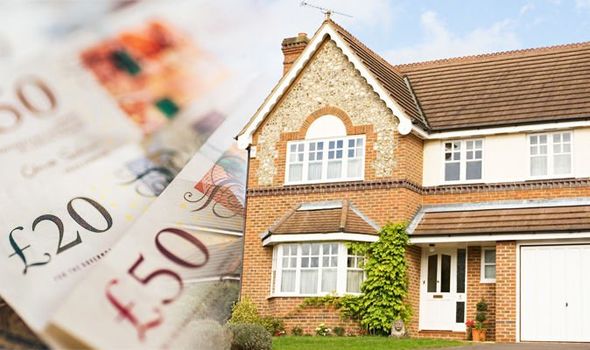According to figures from Halifax, a home in Britain now costs seven times the average UK annual earnings, stretching housing affordability further towards breaking point.
Property prices have risen by 16.8%, while average incomes have only increased by 2.7% since the start of the pandemic, according to the bank.
At the start of 2020:
- Average UK house price: £239,281 (according to Halifax)
- Average UK earnings: £38,374
- House price to income ratio: 6.2
In the first three months of 2022:
- Average UK house price: The cost of a typical home was £279,431
- Average UK earnings: The average annual earnings of someone working full-time were estimated to be £39,402
- House price to income ratio: 7.1
This is the least affordable level ever recorded. Even with the overall rise there is still much disparity between prices across different regions of the UK.
Despite price increase, demand for houses remains strong
2021 saw first-time buyer numbers rise at a record rate – an increase of 35% – to reach an all-time high of 409,370.
26% of first-time buyers are now paying stamp duty, meaning they are spending over £300,000 for their first homes.
A key part of the affordability stress test, which makes lenders pit borrowers’ finances against their high standard variable rates plus 3%, will be withdrawn by the Bank of England.
However, the loan-to-income ‘flow limit,’ will continue. This is the multiple at which banks will lend based on someone’s annual salary. Banks will continue to place a limit on the number of mortgages they can offer where someone is borrowing more than 4.5 times their salary.
The economics of buying a home have changed
Andrew Asaam, Mortgages Director at Halifax, said there was ‘no question’ that the economics of buying a home have changed significantly over the last couple of years:
Soaring property prices and slower wage growth have combined to stretch traditional measures of housing affordability. However, we also know from strong transaction levels that demand has remained extremely strong over that period, both from home-movers seeking bigger properties, and first-time buyers taking their first steps onto the ladder.
He added that interest rates are on the rise to combat inflation, so it’s unlikely that house prices will continue to grow at their recent pace, so the gap between average earning and property prices should narrow. Mortgage lenders will be conducting thorough checks to ensure repayments are manageable, even if interest rates rise more again in future.
While average affordability rates have risen nationally, there are stark regional differences in house prices:
- The South and East of England continues to account for a considerable proportion of the least affordable local areas to buy a home
- Westminster and City of London have the greatest affordability gap – average prices are 14.5 times average earnings.
- Houses in these areas had earnings to house price ratio of 16.8 at the start of 2020, meaning current figures actually show an improvement
- Scottish locations dominated the list of most affordable local areas.
- Inverclyde in the west of Scotland is currently the most affordable place to buy a home, where typical house prices are just 3.1 times average earnings
- Pembrokeshire in Wales, has seen the biggest deterioration in affordability over the last two years, as buyer demand has soared in rural locations offering greater space
The house price to earnings ratio has risen from 4.3 at the beginning of 2020 to close to the national average at 6.9.
Rachel Springall, finance expert at Moneyfacts, said aspiring property owners will know that affordable housing is very much in short supply right now, and this was ‘unlikely to be rectified anytime soon’:
- Prices have risen 16.8% since the start of 2020 compared to a 2.7% rise in wages
- House price inflation puts additional pressure on first-time buyers
- Demand for homes remains strong despite inflationary pressures
Despite all the increases, it is still possible to get on the property ladder!

